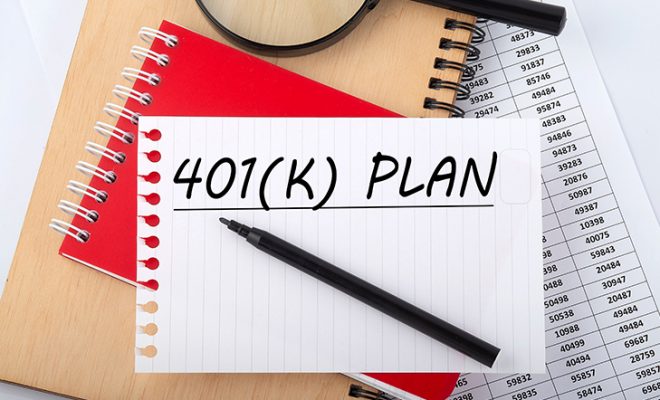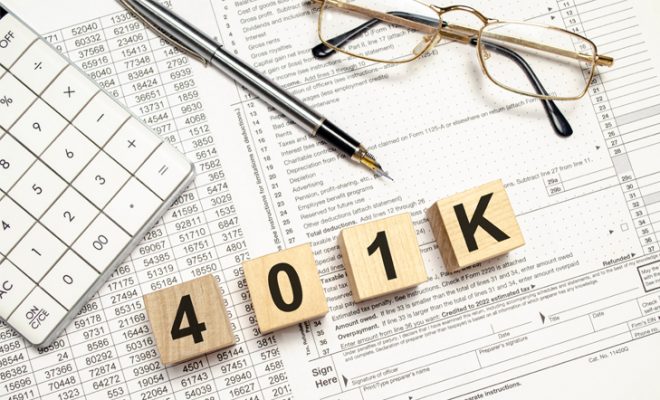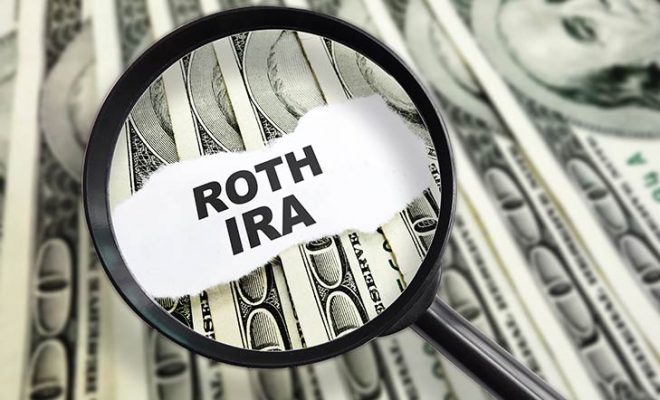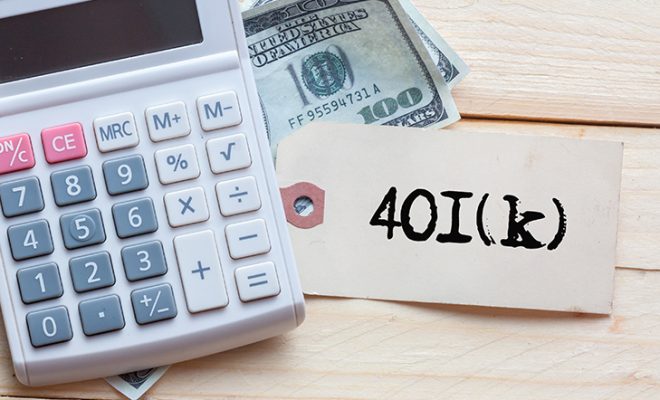403(b) Retirement Plans – A Comparison with 401(k) Plans

Among the multiple IRS (Internal Revenue Service) retirement plans, the 401(k) accounts are widely popular. As per the Investment Company Institute, there are more than 58 million active 401(k) account participants. Americans have invested more than $6.3 trillion in these tax-deferred employer-sponsored programs. Apart from the 401(k) plans, the 403(b) plans are also surprisingly common. As per a report, 403(b) plans have nearly a trillion dollars of savings and cover one in every five U.S. employees. A 403(b) plan is a tax-sheltered retirement plan designed specifically for employees of non-profit making organizations such as charities, public schools, universities, and other qualified religious organizations like churches.
Even though the 403(b) plans were introduced a long time ago, they are significantly less popular than their private-sector counterpart and famous retirement plan cousin – the 401(k) plans. Both plans are the primary choice for employees except for self-employed people. While these plans are nearly similar, they have some important differences that set one apart from the other. It is critical to understand the functioning of the 403(b) plans and their comparison with 401(k) plans, especially if you are changing your employer from one that offers a different plan than the other.
Here is what you should know about 403(b) retirement plans and how they compare against the 401(k) plans:
What is a 403(b) plan
A 403(b) plan, also known as a tax-sheltered annuity or a TSA plan, is a type of retirement plan offered by public schools and specific Code Section 501(c)(3) tax-exempt organizations, such as charities, qualified religious organizations like churches, etc. These plans are offered to employees of non-profit organizations and government firms. Typical participants of the 403(b) plans include school administrators, teachers, government employees, ministers, nurses, doctors, professors, librarians, and others.
The 403(b) plans can either invest in annuities or mutual funds, and have features comparable with those found in a 401(k) plan. If you invest in the 403(b) plan, the contribution is directly deducted from your salary before you receive it. This means you defer the taxes in the present and pay them when you withdraw the money during retirement. Additionally, your funds grow tax-free, which helps to boost your tax returns due to compounding.
How does a 403(b) work
As specified, the features and benefits of a 403(b) are very similar to a 401(k) apart from a few aspects. Just like the 401(k) plan, a 403(b) plan also allows you to invest your money in conservative, middle, or high-risk investments. But 401(k) plans have an option to offer other investment choices than a mutual fund; whereas 403(b) plans can only provide mutual funds and annuities as the investment choice for participants. Technically, 403(b) plans are restricted in their investment avenues, but in reality, there is not much of a difference because most 401(k) plans also only offer mutual funds.
That said, it is important to note that 403(b) plans could be full of insurance products like annuities that generate low returns and also charge heavy fees and surrender charges. It is critical to be careful when investing in such an account. Or, you could also choose good mutual funds instead as per your risk tolerance and retirement goals.
What are the contribution limits, withdrawal rules, and penalties in a 403(b) plan
Both the 401(k) and 403(b) plans allow their respective participants to contribute $19,500 in 2021. The limit was the same for 2020 as well. Employers can make a matching contribution. However, the total combined contribution of the employer and the employee in both the retirement savings account cannot exceed $58,000 in 2021 or 100% of the employee’s most recent annual salary. For 2020, this limit was $57,000. Further, like a 401(k) plan, even a 403(b) plan allows catch-up contributions of $6,500 in 2020 and 2021 for those aged 50 or above. These limits apply to the aggregate contributions made on your behalf to 401(k) or 403(b) plans.
That said, in case of a 403(b) plan, if you have served your company for 15 years and your firm is also a ‘qualified organization’ as per the IRS, then you can contribute an additional $3,000 in your 403(b) account up to a lifetime limit of $15,000. This additional contribution is not permissible in a 401(k) plan. Besides, if you are a part-time worker, 403(b) plans allow you to invest, provided you work at least 20 hours per week and you contribute at least $200 per year to the plan.
Additionally, 403(b) plans and 401(k) plans offer Roth conversion options. In terms of withdrawals, both accounts follow similar rules and allow penalty-free withdrawals only when you reach the age of 59.5. In case of any drawings taken before this age, the IRS levies a 10% penalty on the sum taken along with applicable income tax charges. One exception to this rule can occur if you are a member of the reserves and you are called to active duty for 179 days or more. In such a case, the IRS permits a qualified reservist distribution without any 10% penalty. But the federal income tax charges still apply. That said, like 401(k) plans, even 403(b) plans need you to take Required Minimum Distributions (RMDs) after the age of 72. Even though this restriction was lifted in 2020 under the $2 trillion coronavirus emergency stimulus package, the rules have been placed back in 2021.
As a 403(b) participant, you own your 403(b) account when you are vested in it. Your vested share increases with each year of your employment and once you are 100% vested, your employer cannot take back any of its contributions. However, in case you plan to change your job after you are vested in your 403(b) plan, you might need to roll over your plan into an IRA account. In some cases, the employers might require you to roll over the account, provided you keep a specific balance in your 403(b) plan. Alternatively, if you are not vested in a 403(b) plan, you might lose the employer’s contributions but still retain your contributions.
What is the difference between 403(b) plans and 401(k) plans?
Even though both these retirement savings plans are similar to a large extent, they have a few differences, such as:
| 403(b) Plans | 401(k) Plans |
| Offered to employees of not-for-profit organizations. | Offered to employees of profit-making companies. |
| Employers can match the employee’s contributions. | Employers can match the employee contributions but subject to the Employee Retirement Income Security Act (ERISA) rules. |
| Investment options are restricted to mutual funds and annuities. | Investment options include mutual funds, annuities, stocks, and bonds. |
| 403(b) plans are generally administered by insurance companies and therefore, offer limited investment options. | 401(k) plans are mostly administered by mutual fund companies and hence, offer a wide investment choice. |
| Higher fees and surrender charges. | Lower fees and surrender charges as compared to a 403(b) plan. |
| Employees with at least 15 years of service can make additional contributions up to $3,000 each year. This is above the $19,500 annual limit for 2021. | No loyal or long service contribution rewards are extended in a 401(k) account. |
| 403(b) plans vest funds over a shorter time. In some cases, 403(b) plans allow immediate vesting of funds, which is not so common in a 401(k). | Vesting of funds takes longer than 403(b) and immediate vesting of funds is a rare phenomenon in these plans. |
What are the advantages of investing in a 403(b) plan?
The primary advantage of 403(b) plans is that the contributions to this account are tax-deductible from your federal income taxes. The money is directly cut from your gross salary and invested in the 403(b) plan, without paying any taxes. This reduces your current income tax liability and defers your taxes to the future during retirement when you would likely be in a lower tax bracket.
Further, the earnings and returns are tax-deferred until withdrawn, which is usually in retirement when you would probably pay lower taxes than today. And since your money grows tax-deferred for a long time, you benefit from the power of compounding that enables you to accumulate a larger corpus for your retirement needs.
In a 403(b) account, you can invest as per your risk preference and financial goal. You can also change your investment allocation anytime by paying a trading fee.
In addition to this, you get the advantage of converting your plan into a Roth account. When you opt for a Roth 403(b), you pay your taxes upfront in the year in which you make the conversion. But this implies that you would not owe any taxes in the future upon withdrawal of funds. This is helpful if you expect yourself to fall in a much higher tax bracket during retirement as compared to your current income status.
Another big advantage of a 403(b) is that it gives you free money in the form of employer matching contributions. Some employers contribute 50 cents to $1 for every dollar you contribute. Besides, financial institutions waive rules like minimum investment requirements, etc., to bring down the investment charges and help you take advantage of low-expense institutional funds.
Furthermore, 403(b) plans vest funds over a shorter time duration as compared to 401(k)s. In some cases, 403(b) plans allow immediate vesting of funds, which is not so common in a 401(k). Also, 403(b) plans allow additional contributions to employees working for the same employer for more than 15 years. This is not available in a 401(k) plan.
Why participate in a 403 (b) plan?
A retirement plan like the 403(b) can be one of the most valuable benefits of your employment. If you use these plans effectively, you can easily financially secure your retirement years. More specifically, if you work for a not-for-profit organization, a 403(b) plan is an ideal tool that can help you reach your retirement goals. These plans allow you to set aside a part of your salary to save for retirement, while also allowing your money to grow through market-linked investments as per your risk appetite and financial goals. You also get the benefit of employer matching contributions, which is typically free money for your golden years.
Further, 403(b) plans reduce your taxable income in the present and defer your taxes onto the future in retirement when your tax bracket will likely be lower than today, resulting in low tax liability. You also do not pay any taxes on earnings from your 403(b) account until you withdraw the money in retirement, when you may be in a lower tax bracket.
How much should you invest in a 403(b) plan? What to pick within a 403(b) plan
The average goal for a retiree is to save approximately 15% of their monthly income for retirement each year. This figure is inclusive of your employer’s matching contribution made to the 403(b) plan. You can also increase your contribution each time you get a raise to eventually max out your IRA contribution limits.
In terms of choosing your investments in a 403(b) plan, it is advisable to pick lower-cost funds that help you optimally diversify across different industries and countries. You can balance out the stock and bond ratio as per your risk preference, age, and when you expect to retire. For instance, if you are nearing retirement, it can be beneficial to choose funds heavily invested in bonds than equities, as the former offers secure returns and low risk in comparison to the latter that generates riskier but high returns.
To sum it up
In all, the 403(b) is less popular than the 401(k) plan because it is only available to a specific type of employee. But in terms of features, both 401(k) and 403(b) plans work on similar aspects and rules, apart from a few differences like more flexibility around withdrawals and catch-up contributions for long-term employees. Besides these minor advantages in a 403(b) plan, both plans are nearly the same and work to fulfill the same objective for retirement planners. Hence, if you qualify for a 403(b) plan, it can be a great base for your retirement-inspired dreams, provided you are prudent in your investment selections.
To be sure of your retirement planning decisions, you can consult a professional financial advisor to help you choose the right options and secure the golden years of your life.










